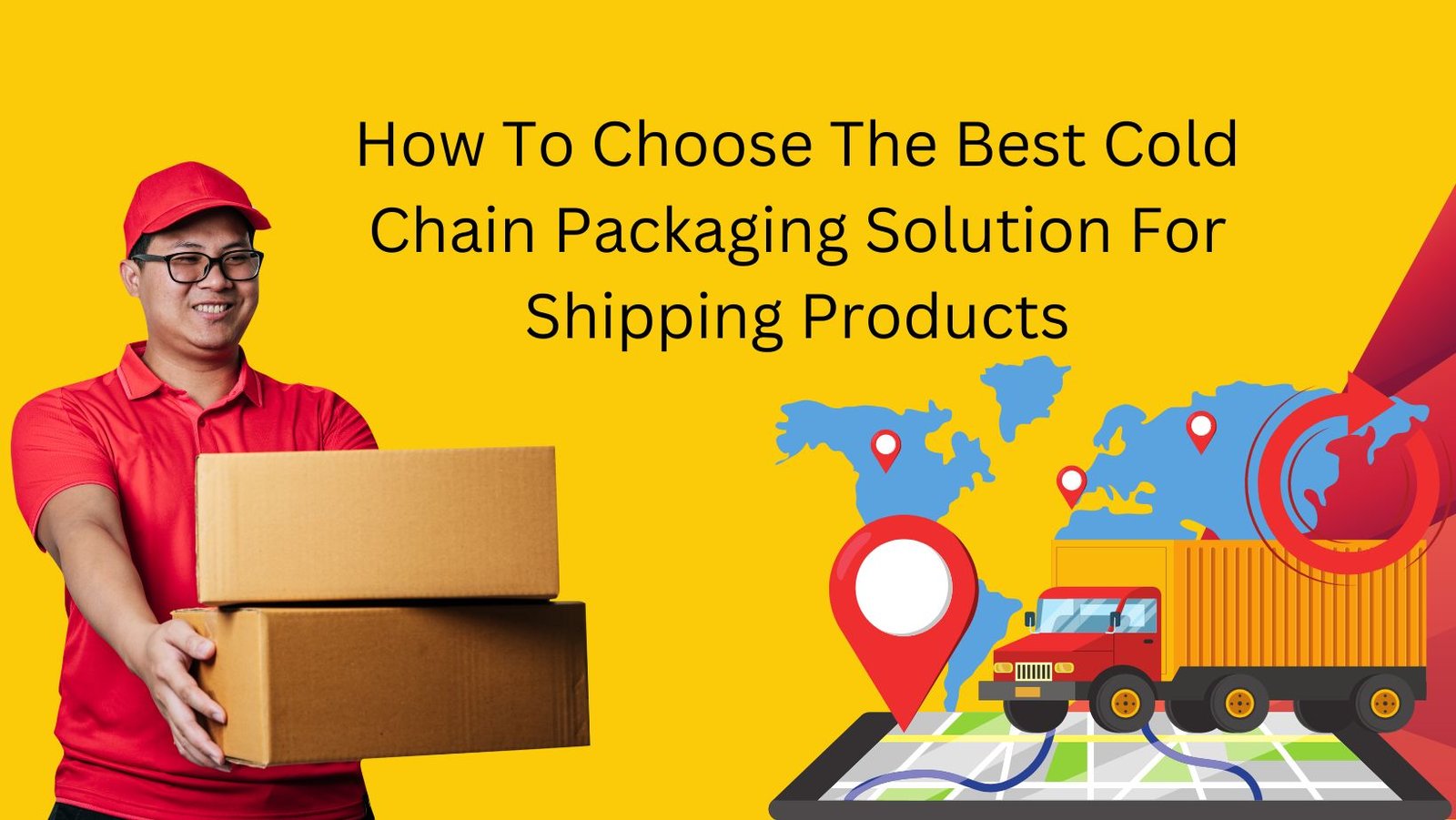
Cold chain packaging refers to the specialized packaging and logistics process used to maintain a controlled temperature environment for temperature-sensitive products throughout their transportation and storage. It is a critical aspect of the supply chain, particularly for industries dealing with perishable, pharmaceutical, biotechnological, and other temperature-sensitive goods.
The main purpose of cold chain packaging is to preserve the integrity, efficacy, and quality of these temperature-sensitive products, ensuring they reach their destination in optimal condition. Temperature excursions outside the prescribed range can lead to spoilage, reduced effectiveness, or even complete product degradation.
Contents
- Importance of Cold Chain Packaging in Temperature-Sensitive Industries
- The Impact of Inadequate Packaging on Product Integrity
- Selecting the Ideal Cold Chain Packaging Solution
- Understand Cold Chain Requirements:
- Assess Your Product’s Temperature Tolerance:
- Evaluate Transportation and Storage Periods:
- Research Insulation Materials:
- Determine Packaging Size and Volume:
- Consider Packaging Durability and Protection:
- Prioritize Data Monitoring and Tracking:
- Explore Sustainable Packaging Options:
- Identify Suitable Cold Chain Packaging Solutions:
- Research and Choose Reliable Suppliers:
- Test and Validate the Packaging Solution:
- Assess Cost Considerations and Return on Investment:
- Conclusion:
Importance of Cold Chain Packaging in Temperature-Sensitive Industries
Cold chain packaging is of paramount importance in temperature-sensitive industries for several key reasons:
Product Integrity and Quality:
Temperature-sensitive products, such as pharmaceuticals, vaccines, biologics, and certain food items, are highly susceptible to temperature fluctuations. Proper cold chain packaging ensures that these products maintain their integrity and quality from the point of production to the end-user. It helps prevent spoilage, degradation, or loss of efficacy, ensuring that customers receive products in the best possible condition.
Safety and Efficacy:
In industries like pharmaceuticals and biotechnology, the safety and efficacy of products are directly linked to their temperature stability. Vaccines, for instance, may become ineffective if exposed to higher temperatures, leading to compromised immunity and public health risks. Cold chain packaging ensures that these critical products remain within their required temperature range, safeguarding patient health and well-being.
Regulatory Compliance:
Temperature-sensitive industries are subject to strict regulatory requirements and standards, such as Good Distribution Practice (GDP) and Good Manufacturing Practice (GMP). Proper cold chain packaging is essential for compliance with these regulations, ensuring that products meet the specified storage and transportation conditions. Non-compliance can result in product recalls, fines, and damage to a company’s reputation.
Global Supply Chain:
In today’s interconnected world, temperature-sensitive products are transported across vast distances and international borders. Cold chain packaging facilitates the safe and reliable movement of these goods throughout the global supply chain. It enables companies to deliver products to distant markets while maintaining product quality and consistency.
Shelf Life Extension:
Cold chain packaging can extend the shelf life of perishable goods, such as fresh fruits, vegetables, and seafood. By controlling the temperature during storage and transportation, the degradation of these products is slowed down, allowing them to reach consumers with an extended period of freshness.
Customer Satisfaction and Trust:
Reliable cold chain packaging instills confidence in consumers, knowing that the products they receive are safe and effective. In industries like pharmaceuticals, where patient well-being is at stake, the trust built through proper cold chain practices is invaluable.
Minimizing Product Loss:
Temperature excursions and inadequate packaging can lead to product losses and financial implications for businesses. Implementing robust cold chain packaging solutions helps minimize product loss and waste, contributing to cost savings and improved profitability.
Expanding Market Reach:
Proper cold chain packaging enables businesses to enter new markets with temperature-sensitive products. It opens up opportunities to serve diverse geographical regions and customer segments without compromising product quality or safety.
The Impact of Inadequate Packaging on Product Integrity
Inadequate packaging can have significant adverse effects on the integrity of products, particularly in industries dealing with temperature-sensitive goods. The impact of inadequate packaging on product integrity can be far-reaching and may include the following consequences:
Spoilage and Degradation:
Temperature-sensitive products, such as pharmaceuticals, biologics, and perishable foods, are susceptible to degradation when exposed to temperatures outside their specified range. Inadequate packaging that fails to maintain the required temperature can lead to product spoilage, rendering the items ineffective or even harmful.
Product Loss and Financial Implications:
When temperature-sensitive products suffer from inadequate packaging and lose their integrity, companies may experience significant product loss. This loss represents a direct financial impact on the company’s bottom line and may lead to increased costs due to product recalls or disposal.
Non-Compliance with Regulations:
Many industries, especially pharmaceuticals and biotechnology, are subject to stringent regulations and standards related to product storage and transportation. Inadequate packaging that fails to meet these requirements can lead to non-compliance issues, potentially resulting in regulatory penalties, legal consequences, and damage to a company’s reputation.
Negative Brand Perception:
Inadequate packaging and product integrity issues can lead to negative perceptions of a brand. Consumers may lose trust in the company’s ability to deliver reliable and safe products, leading to a decline in customer loyalty and decreased sales.
Disruption of Supply Chain:
Inadequate packaging can cause disruptions in the supply chain. When products do not reach their intended destinations in optimal condition, it can lead to delays, interruptions, and inefficiencies in the supply chain, affecting multiple stakeholders.
Environmental Impact:
In some cases, inadequate packaging may contribute to environmental issues. For example, improper storage of certain chemicals or hazardous materials could lead to leaks or spills, posing environmental risks.
Legal and Liability Issues:
In cases where inadequate packaging results in harm to consumers or other parties, companies may face legal liabilities and lawsuits. This can lead to significant financial burdens and damage to the company’s reputation.
Overall, inadequate packaging can have severe repercussions on product integrity, consumer safety, and a company’s overall business performance. To mitigate these risks, businesses must invest in robust and reliable packaging solutions, especially in industries dealing with temperature-sensitive products, where product integrity is of utmost importance.
Selecting the Ideal Cold Chain Packaging Solution
Selecting the ideal cold chain packaging solution involves a careful and systematic approach to ensure that temperature-sensitive products are transported and stored safely and effectively. Here’s a step-by-step guide to help you choose the best cold chain packaging solution for your specific needs:
Understand Cold Chain Requirements:
- Identify the temperature-sensitive products in your supply chain and their specific temperature requirements.
- Determine the range of temperature conditions needed for transportation and storage.
Assess Your Product’s Temperature Tolerance:
- Consult product specifications and manufacturer recommendations to understand the acceptable temperature range for safe transportation and storage.
Evaluate Transportation and Storage Periods:
- Consider the length of transportation and storage periods to select packaging that can maintain the required temperature throughout the entire journey.
Research Insulation Materials:
- Learn about different insulation materials used in cold chain packaging, such as Expanded Polystyrene (EPS), Polyurethane (PU), and Vacuum Insulated Panels (VIP).
- Evaluate their thermal conductivity and heat retention properties to ensure optimal temperature control.
Determine Packaging Size and Volume:
- Choose packaging that matches the dimensions of your products to minimize air gaps and maintain consistent temperature levels.
- Optimize space efficiency to reduce shipping costs and maximize storage capacity.
Consider Packaging Durability and Protection:
- Evaluate the ruggedness of packaging for various transportation modes, including road, air, and sea.
- Ensure that the packaging provides adequate protection against physical damage and environmental factors.
Prioritize Data Monitoring and Tracking:
- Consider the importance of real-time temperature monitoring to detect any deviations and take corrective actions promptly.
- Explore the integration of Internet of Things (IoT) technology for seamless tracking and monitoring of shipments.
Explore Sustainable Packaging Options:
- Assess the environmental impact of your packaging choices and opt for eco-friendly materials and practices wherever possible.
- Balance sustainability goals with cost-effectiveness and product protection.
Identify Suitable Cold Chain Packaging Solutions:
- Explore passive packaging solutions, such as insulated shippers, containers, Phase Change Materials (PCMs), and gel packs.
- Consider active packaging solutions like refrigerated containers and refrigeration units, or powered temperature-controlled shippers.
- Evaluate hybrid packaging solutions that combine passive and active elements for optimal performance.
Research and Choose Reliable Suppliers:
- Evaluate the experience and expertise of potential cold chain packaging suppliers.
- Request client references and review case studies to assess the supplier’s track record.
- Look for suppliers who can offer customization and tailored solutions to meet your specific requirements.
- Consider the level of customer support and after-sales services provided by the supplier.
Test and Validate the Packaging Solution:
- Prioritize rigorous testing and validation of the selected cold chain packaging solution.
- Ensure that the packaging complies with industry standard testing methods, such as those provided by the International Safe Transit Association (ISTA).
Assess Cost Considerations and Return on Investment:
- Strive to strike the right balance between investing in high-quality packaging and managing costs effectively.
- Calculate the total cost of ownership (TCO) for different packaging solutions, considering initial purchase costs, operational expenses, and potential risks.
- Consider the long-term benefits and return on investment of reliable cold chain packaging.
By following these steps and considering the specific needs of your products and supply chain, you can confidently select the ideal cold chain packaging solution to protect the integrity and quality of your temperature-sensitive goods throughout the entire logistics process.
Conclusion:
The impact of the right packaging solution on pharmaceutical product integrity and customer satisfaction cannot be understated, as it ensures the safe and effective delivery of medications, vaccines, and biologics. By fostering strategic partnerships with reliable pharmaceutical cold chain packaging suppliers, businesses can optimize logistics operations, minimize product loss, and maintain a competitive edge in the market. Taking these steps will empower businesses to protect the integrity of pharmaceutical products and enhance customer satisfaction, thereby building trust and loyalty in their brand.












